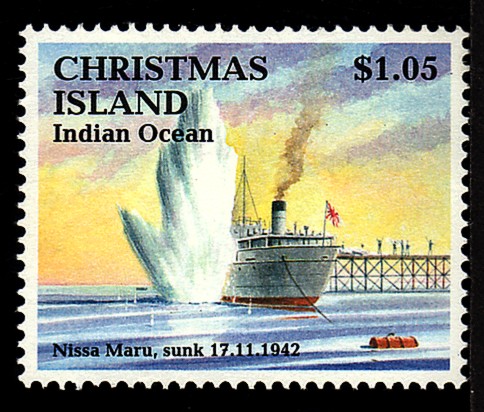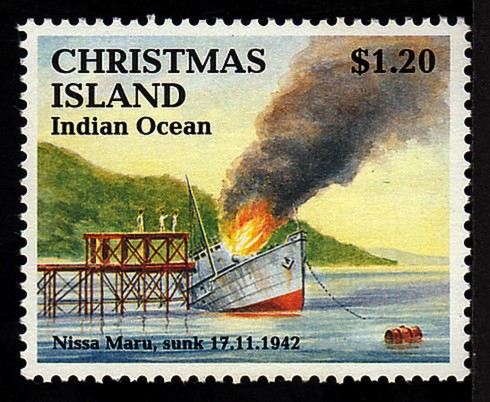

Built as a cargo vessel during the Second World War, where and by which yard till so far unknown, did have a tonnage of 833 gross tons.
Early in February 1942, the inhabitants of Christmas Island made preparations for the impending invasion by Japanese forces.
Deep sea mooring buoys were towed out to sea and sunk, thus making almost impossible the task of mooring a vessel within any of the few anchorages inside the coral reef which encircles the island.
31 March 1942 the Japanese invasion fleet appeared on the horizon. The fleet consisted of two aircraft carriers, two or three large warships, and five or six merchant ships, which sailed into the Cove in perfect weather and the landing was effected without any opposition whatsoever.
About 100 Japanese civilians who had landed with the soldiers were technical staff brought to get the phosphate plant operating and ship the phosphate to Japan.
After the first two or three weeks of occupation, the Japanese had managed to ship about 1.000 tons of phosphate. As the loading plant had not been repaired and as no ship of any size could be moored at the jetties the rock phosphate had been “bagged” and man handled by the Chinese laborers into the hold of the NISSA MARU, a 700 ton ship which sailed between Christmas Island and Surabaya with supplies.
The ship was tied up alongside one of the jetties and was loaded by crane.
17 November 1942 she was torpedoed whilst unloading supplies. Two torpedoes made direct hits and the ship sank almost immediately.
One Malay and four Japanese were killed.
After the loss of the NISSA MARU no more attempts were made to ship phosphate to Japan.
When the British reoccupied the island in October 1945, the top of the wreck could be seen some 5.5 meters below the surface. The swells in following years eventually dislodged her, forcing her to deeper water.
Some salvage took place, by the removal of the propellor and some non-ferrous fittings during the following years.
Source: copied from http://www.submarinesonstamps.co.il/openhist.php?ID=199 Christmas Island Philately Bureau newsletter. Dan Rodlie.
